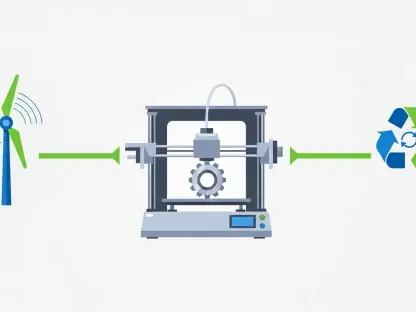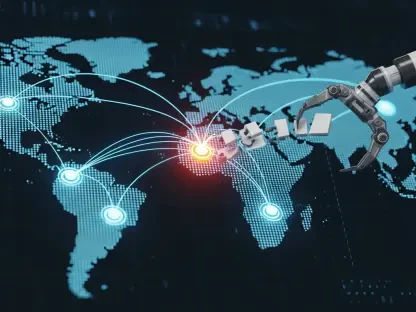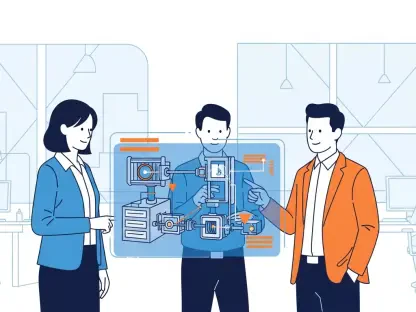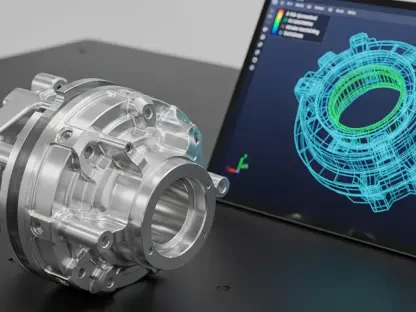In a world where automation is reshaping how businesses operate, small and medium-sized enterprises (SMEs) stand at the forefront of this transformation by embracing robotics to address persistent labor shortages and boost productivity. Advanced technology, marked by affordability and seamless integration of artificial intelligence, has made robotics an attainable tool for SMEs. Once considered a preserve of large-scale manufacturers, robotics are now revolutionizing operations by providing practical yet sophisticated solutions customized for smaller enterprises. This shift is fundamentally changing the workforce landscape, evolving work efficiency, and expanding opportunities across various sectors, from manufacturing to services. The growing dependency on robots is prompting a deeper inquiry into the evolving roles humans will play in this technologically enhanced work environment.
The Shift Towards Accessible Robotics
In recent years, the integration of robotics into SME operations has been accelerated by the critical need to mitigate workforce shortages while enhancing productivity. Once dominated by large corporations due to the prohibitive costs and the complexity of operating traditional robots, the scenario has shifted significantly. Today, more user-friendly interfaces and cost reductions have democratized access to robots, allowing SMEs to integrate advanced technology into their daily operations without significant financial burdens. The modern workforce is increasingly enhanced by these robots, which complement human efforts rather than replace them. The current proliferation of such technology reflects a greater trend toward creative solutions that leverage innovation to solve persistent challenges in productivity and operational efficiency.
The accessibility of cobots, or collaborative robots, signifies a pivotal turning point in how SMEs interact with sophisticated machinery. Unlike traditional robots that require extensive programming and are ideal for large-scale industrial settings, cobots are designed to work alongside human workers. By simplifying the integration process, cobots enable a broader range of industries to incorporate advanced robotics, spanning from administrative roles to food service and even healthcare applications. Businesses worldwide are now reaping the benefits of reduced manual intervention, while employees are freed from repetitive tasks, leading to a more engaging and innovative work environment. The effective deployment of cobots reflects an evolving understanding of human-robot collaboration, where both entities coexist and enhance output through harmonious interaction.
Innovations at automatica 2025
The recent automatica 2025 event underscored the transformative potential of robotics for SMEs, presenting cutting-edge advancements and practical applications indispensable for modern business models. During the event, exhibitors from across the globe showcased innovations that leverage the versatility and economic feasibility of cobots, illuminating pathways for their integration across various industrial landscapes. In particular, environments such as rehabilitation, administration, and food service saw notable advancements, highlighting how even industries historically dependent on manual labor embrace robotic technology to streamline operations and enhance overall efficiency. These exhibitions provided clear insights into how SMEs could harness technology to redefine their operating methodologies, driving value and innovation.
One notable exemplar exhibited at automatica 2025 was a demonstration by Fanuc, which integrated cobots and traditional robots in a culinary setting. This practical illustration of cobots crafting sandwiches and managing meal preparations highlights the adaptive capabilities and versatility of robotic technology across non-manufacturing sectors. Such demonstrations inspire SMEs by offering tangible examples of how technology could be implemented without straining resources, offering economic feasibility while transforming business processes. Exhibitions like these reflect a broader trend toward inclusive technological adoption, showing that the benefits of robotics are not confined to businesses with substantial capital but are attainable for operations of all scales across diverse sectors.
AI Enhancing Robotic Functionality
Artificial Intelligence has significantly expanded the capabilities of cobots, making them indispensable tools in modern business operations. AI-driven functionalities have given rise to transformative improvements in robotic capabilities, including voice control and 3D vision, unlocking potential applications in various industries. Companies like Universal Robots and Delta Electronics have been at the forefront of integrating AI into robotics, showcasing advancements that enhance performance and flexibility. These AI-driven enhancements allow cobots to adapt swiftly to dynamic environments, broadening their applicability across different manufacturing and service sectors. This evolution signifies a partnership where technology augments human capabilities, leading to improved efficiency and innovation.
As SMEs look to harness the potential of these AI-powered cobots, a notable trend is the increasing ability of robots to perform tasks traditionally managed by humans. This shift in task execution is facilitated by AI, which enables robots to interpret complex data, adapt to complex scenarios, and execute multifaceted tasks with precision. Through cognitive capabilities, cobots are effectively transforming how various industries approach problem-solving and process enhancement. The role of AI in robotics underscores a broader narrative of technological collaboration that empowers businesses to navigate competitive landscapes with renewed agility and foresight, redefining operational efficiencies near and far.
Overcoming Barriers for SMEs
Recently, robotics have become vital in addressing workforce shortages and boosting productivity for SMEs. Previously, high costs and operational complexities limited robot use to large corporations. Now, easier interfaces and price cuts allow SMEs to incorporate advanced technology without hefty expenses. These robots don’t replace humans; instead, they complement their efforts, representing a trend toward innovative solutions for persistent productivity issues. The arrival of cobots, or collaborative robots, marks a significant change in SMEs’ machinery interaction. Unlike traditional robots that need extensive programming, cobots work cooperatively with people and simplify integration across varied industries, including administration, food service, and healthcare. Globally, businesses benefit from less manual work, freeing employees from repetitive tasks and fostering an engaging, innovative environment. This successful cobot deployment illustrates the growing understanding of human-robot collaboration, enhancing outcomes through harmonious interaction.









